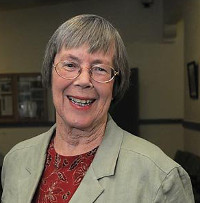A Former Goleta Mayor Weighs In on the Election
Voters Can Decide Whether to Select or Elect the City Leader
To elect or select the mayor — that is the question. For Goleta voters, C2016 on this November’s ballot is a measure to decide whether to move to an elected mayor for Goleta and, if so, whether it should be for a two-year or a four-year term.
For the city’s first 15 years, Goleta’s mayor has been selected or appointed by the five councilmembers at the first meeting in December. In practice, the position has rotated among the councilmembers each year. However there is nothing to prevent the appointment being for two or more years, as is the case in Carpinteria. The remaining six cities in the county have elected mayors, some for two and some for four-year terms.

On its face, a mayoral election would seem a minor change in procedure for Goleta, with the advantage that the people could choose whom they wanted to be the public representative of the city. Of course, under the current system, the public can already weigh in at the December meeting about whom they would like to see as mayor, and the council can appoint that person for two or more years if they so wished.
However, winning an election would significantly concentrate power in a mayor, a factor apparently not discussed by the council before voting to place this issue on the ballot. Under state law, “An elected mayor, with the approval of the city council, shall make all appointments to boards, commissions, and committees.” While council ratification provides some check on this process, there is no question that an elected mayor would have significant influence over the composition of numerous appointed policy committees, such as the Planning Commission.
At present, each councilmember appoints a planning commissioner, ensuring that a variety of viewpoints are represented. Most other commissioners are appointed after an open application process, public interviews, and a vote of the council as a whole. This has worked well during the history of our city.
To quote from the rebuttal argument to C2016: “How much influence over the city’s direction should be concentrated in one person for 2 or 4 years? Or should the responsibility be shared in a public, transparent process among five council members with a variety of viewpoints reflecting voter’s preferences as it is now.”
Today the councilmembers, including the mayor, are essentially peers and have an equal vote in policy decisions. The mayor’s role, whether appointed or elected, is to chair council meetings, work on agenda planning with staff, call special council meetings, perform ceremonial functions, and represent the city in the community. A number of cities in the county appoint their mayor to regional bodies such as Santa Barbara County Area Government (SBCAG), thus ensuring some continuity of membership. That has never been the practice in Goleta; here, councilmembers serve in that role, often for several years.
There is nothing an elected mayor can do, other than control the appointment process, that an appointed mayor cannot do equally well. And that exception gives power to the mayor that has inherent negatives. It is also harder to remove an elected mayor who fails to perform. Currently, an appointed mayor can be removed from office by a majority vote at any council meeting. An elected mayor could only be removed by impeachment or recall, an extremely divisive and expensive process.
Establishing an elected mayor is essentially setting apart one member of a five-member board who will be perceived by the public as having more prestige, influence, and power. It threatens to diminish the collegiality of a rotating mayorship. Today, the council as a whole learns from each new mayor, and they see themselves as equals. I know from my own experience that it is a privilege to serve as mayor and represent the city, and it is a sad day when you have to step down. But I think rotating this experience through the council is one that each member can look forward to and learn from. If the council believes that two-year terms would add to the leadership strength of the city, it can be done by resolution or ordinance. It does not require an elected mayor with set terms to make this change.
This may seem like a minor matter with the drought and extended development pressing in on us. But C2016 is an unnecessary change that adds nothing to the smooth governance of the city. I urge Goletans to vote “no” on C2016.
The ballot measure can be found here, and the impartial analysis can be read here.



